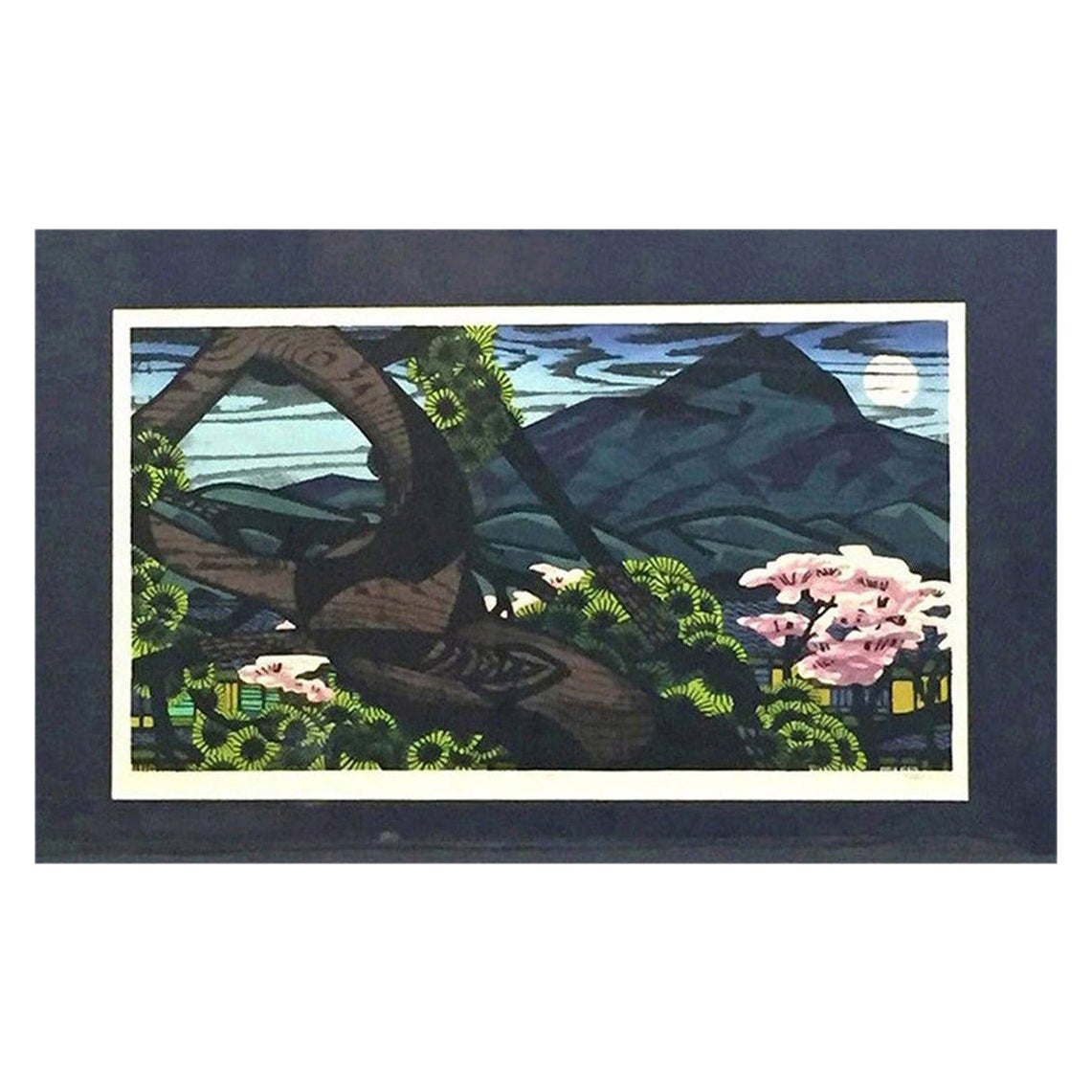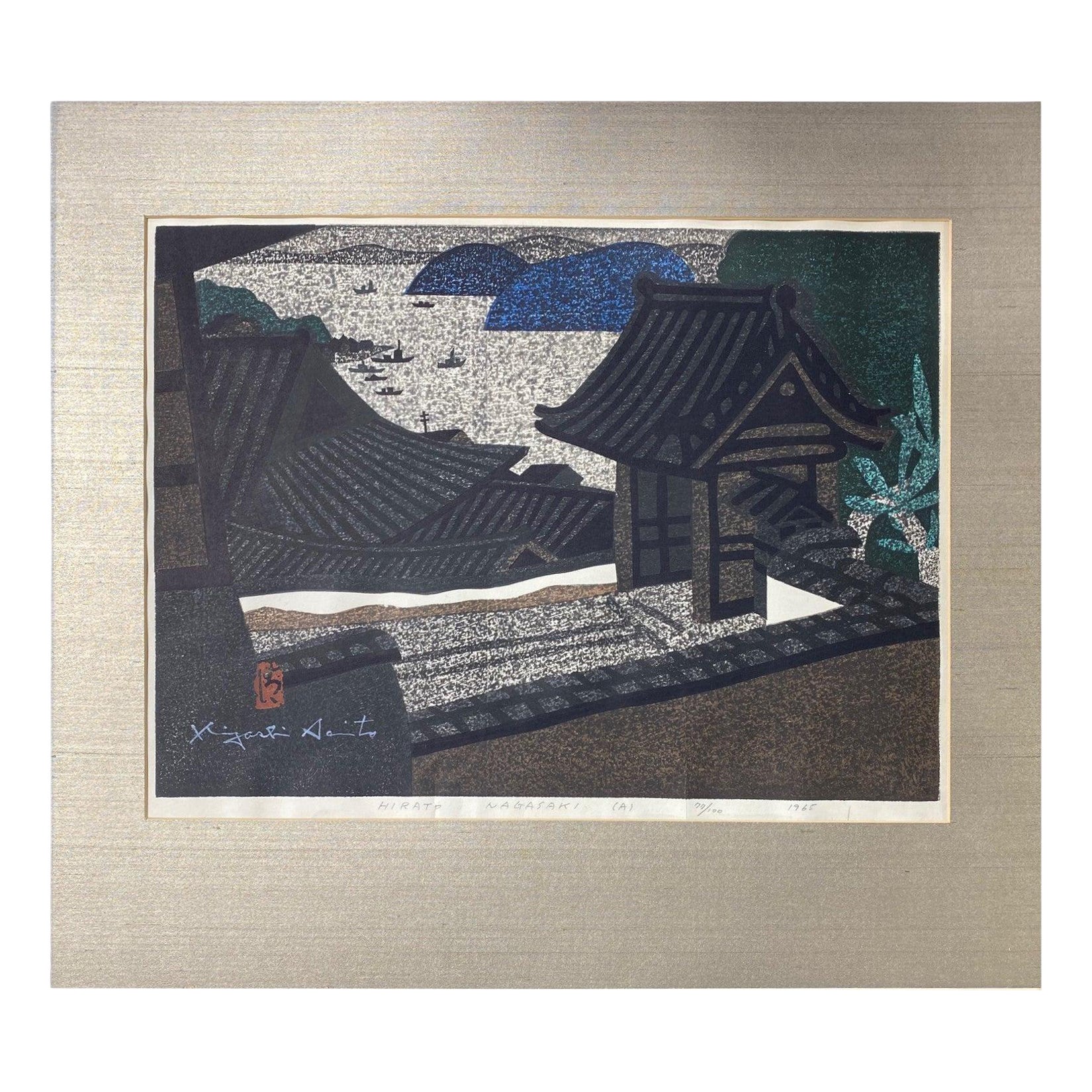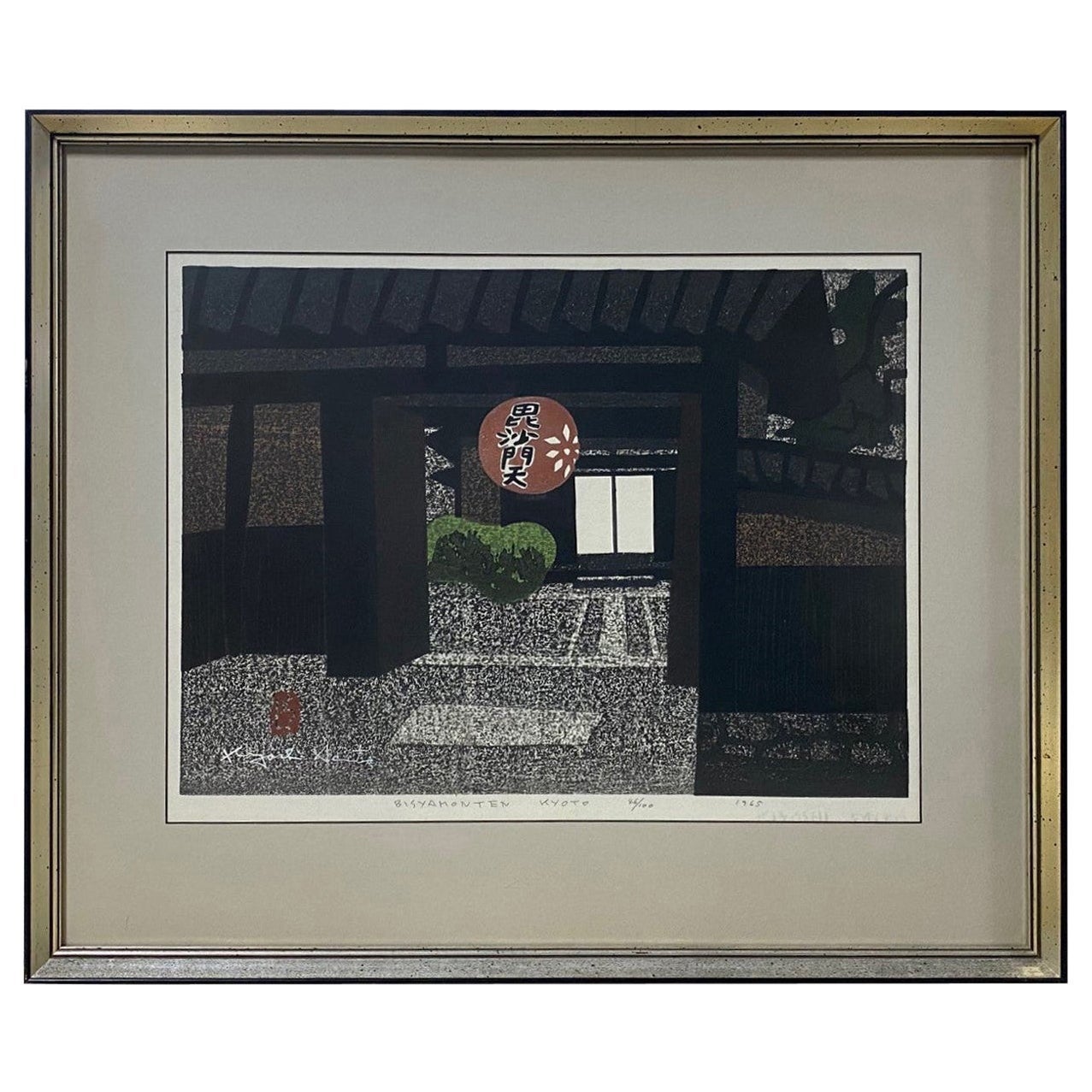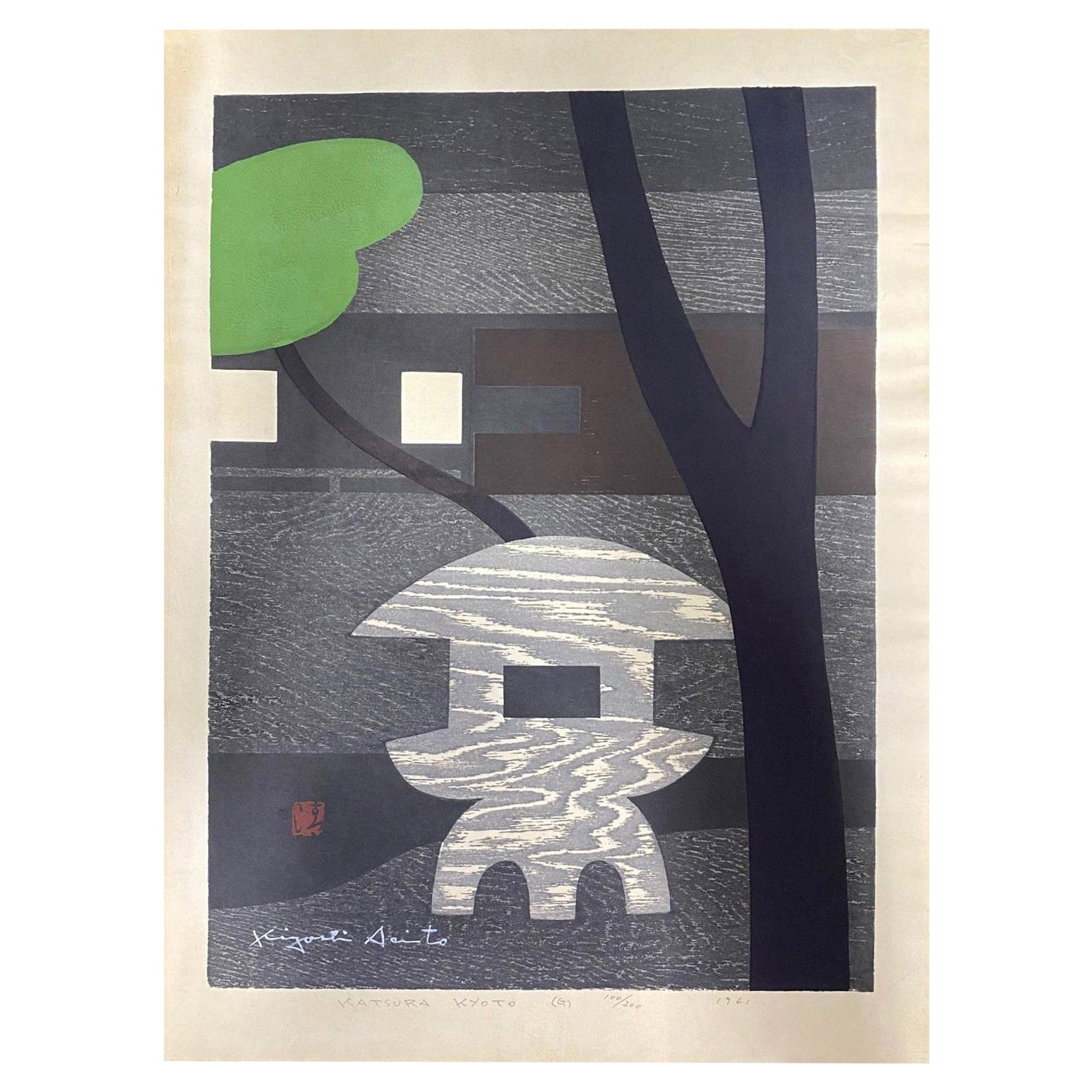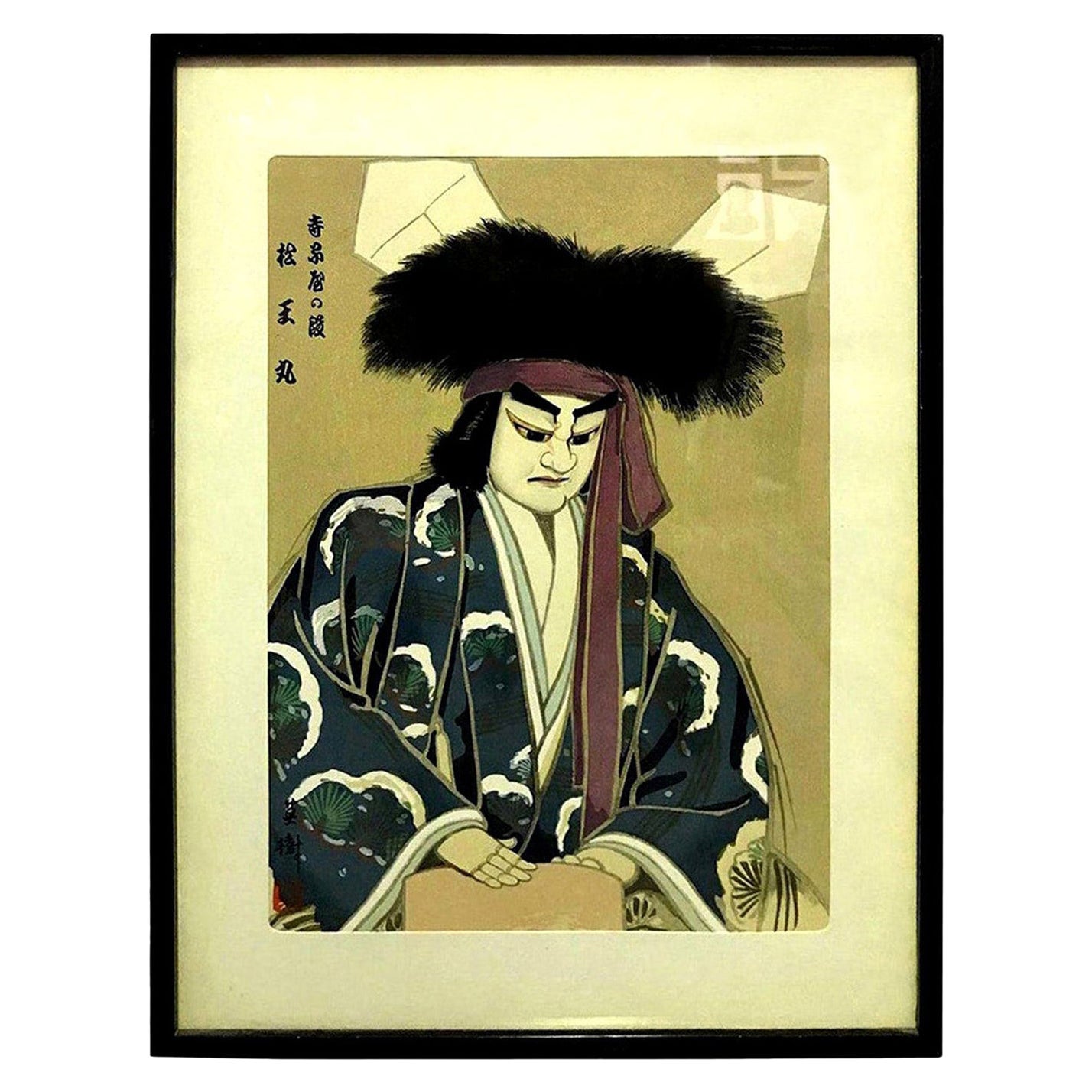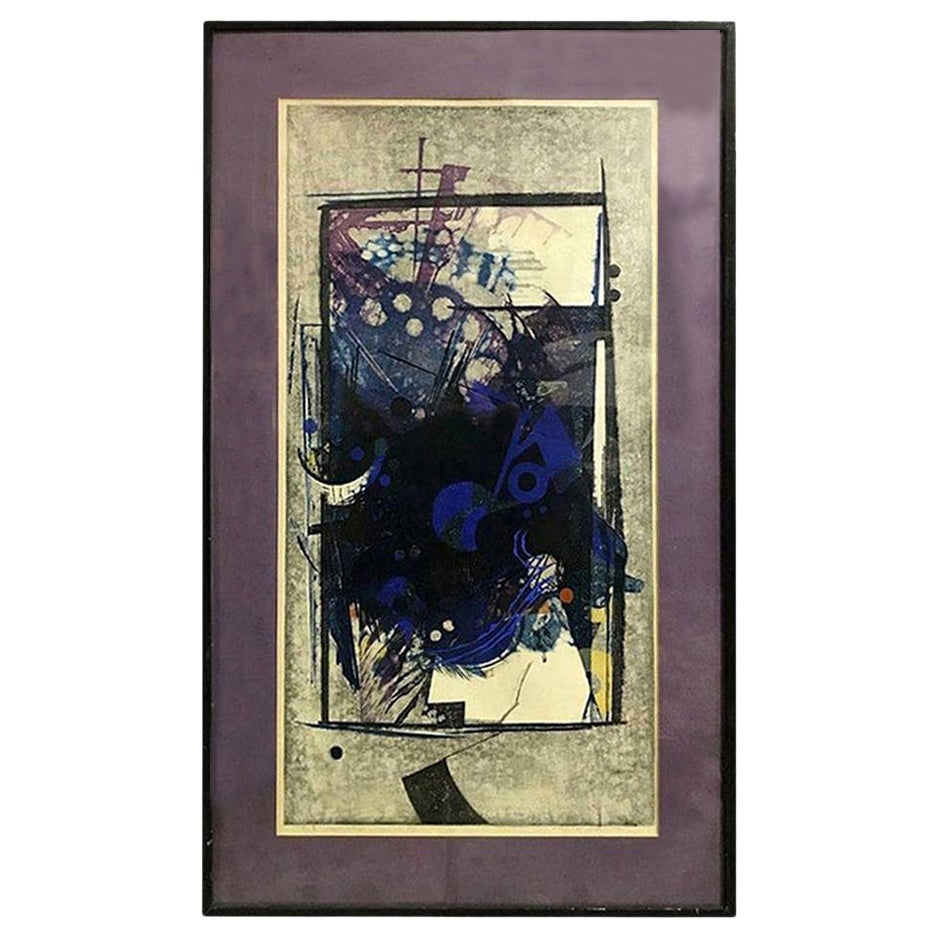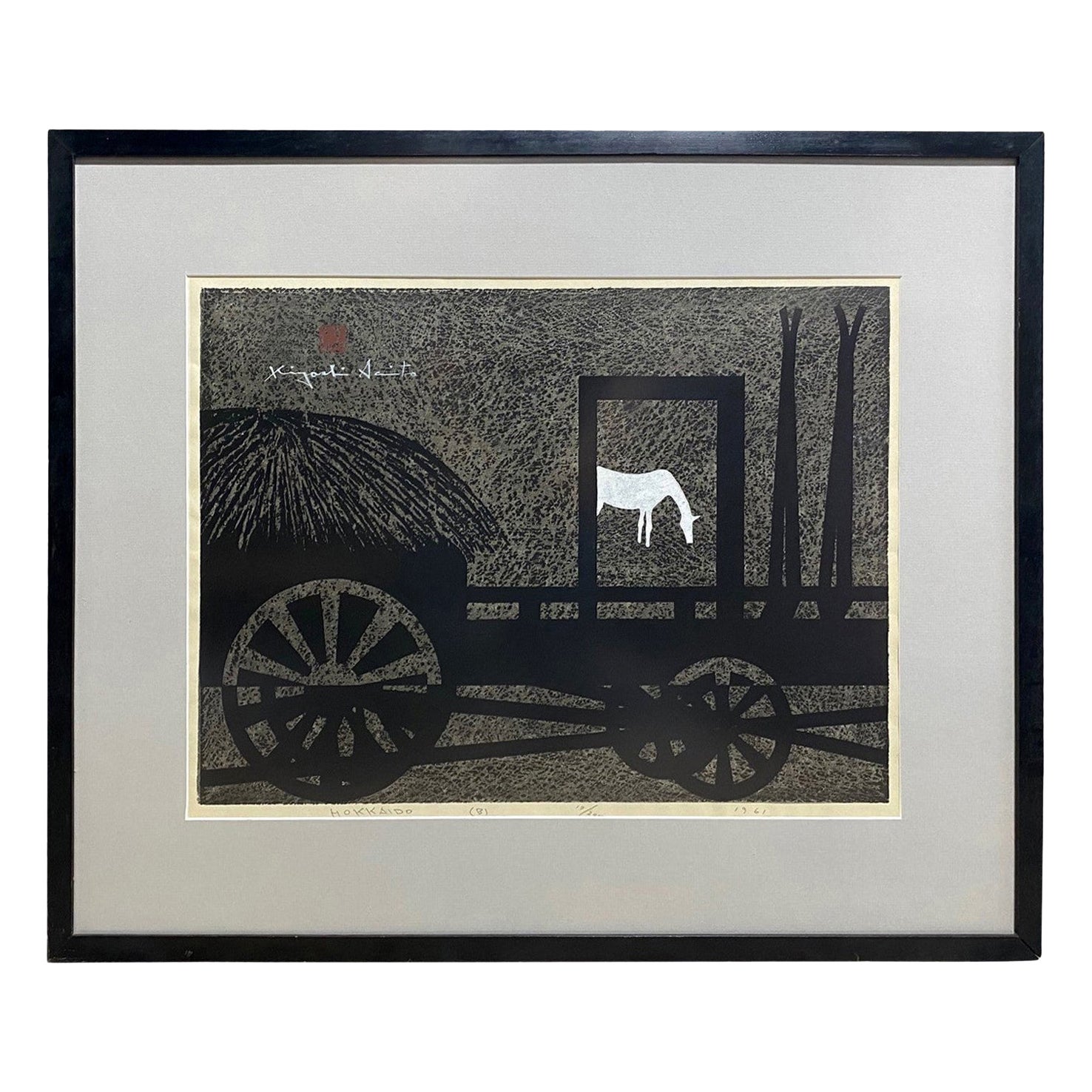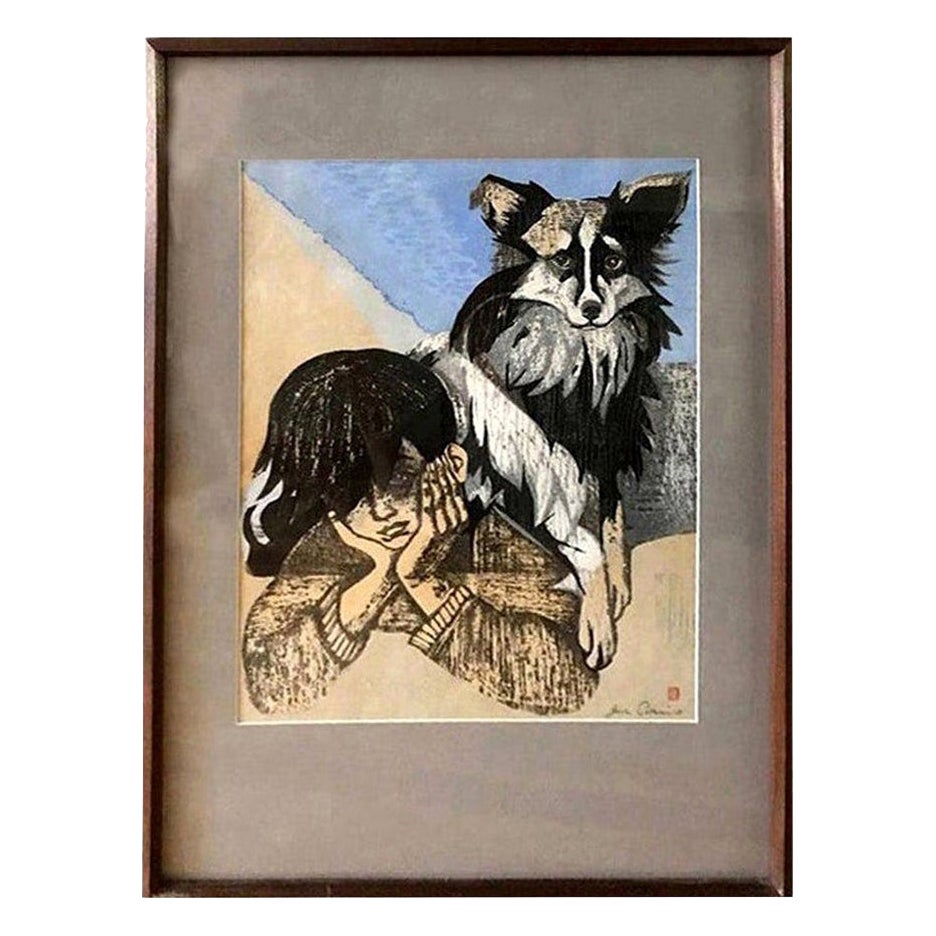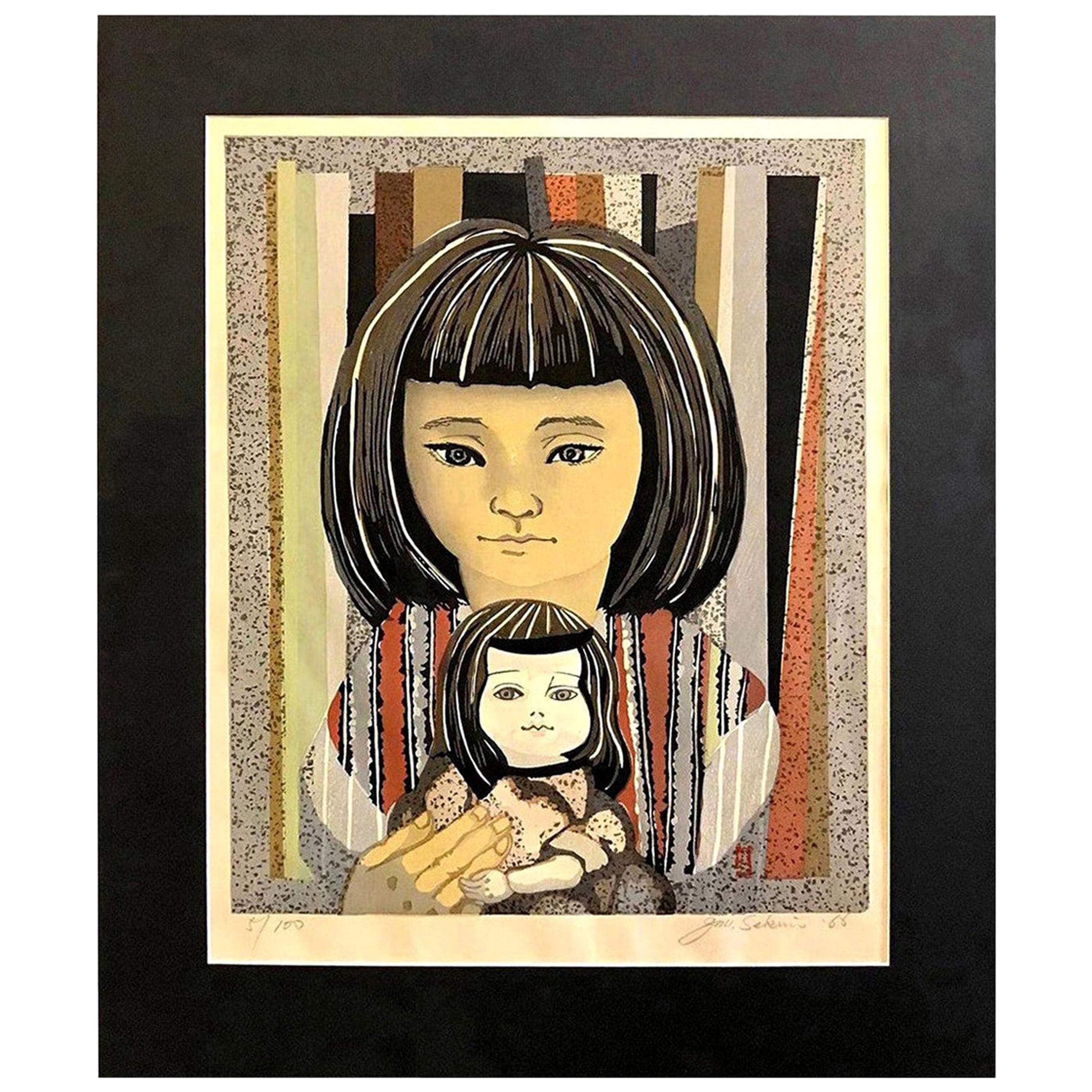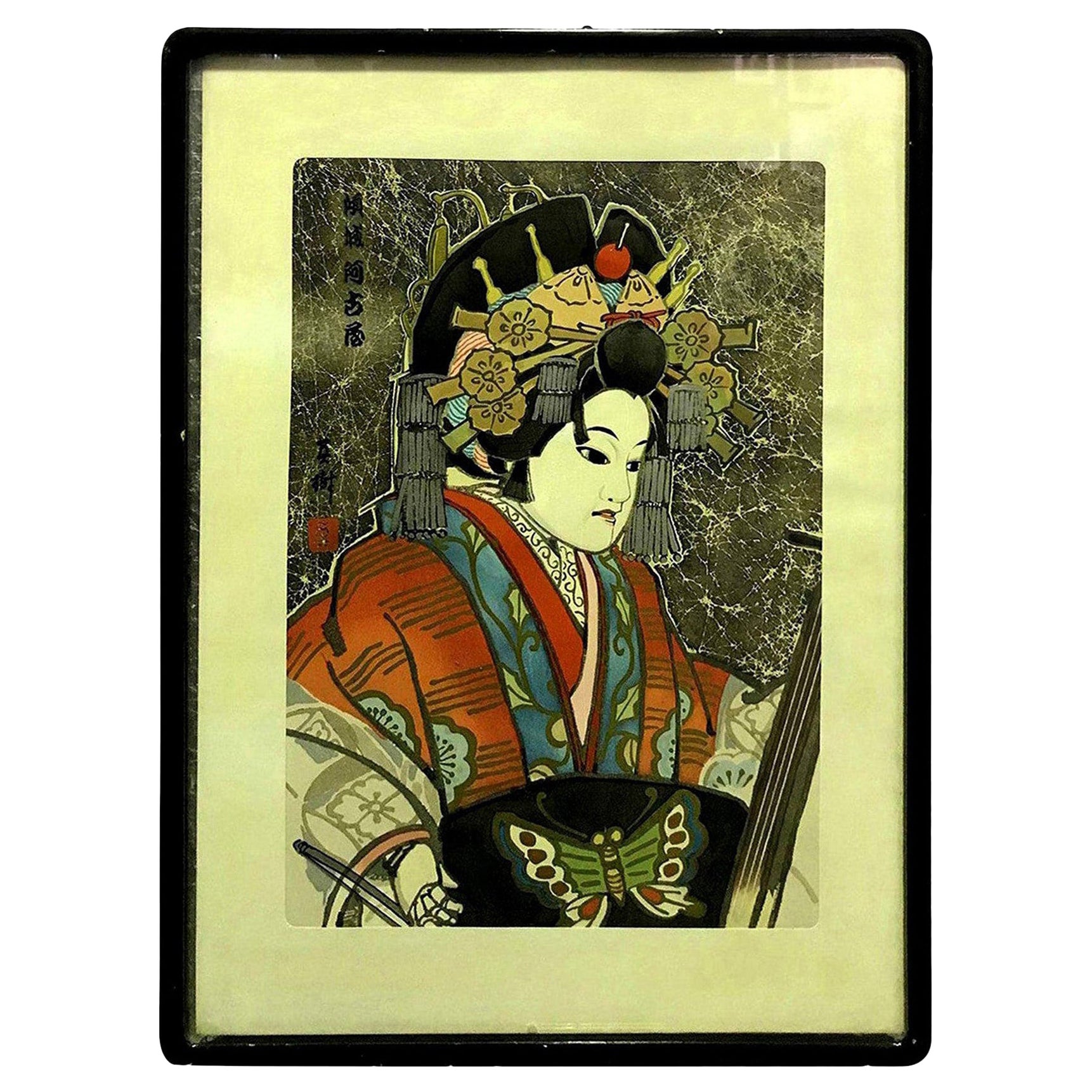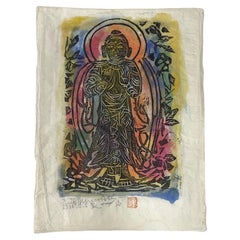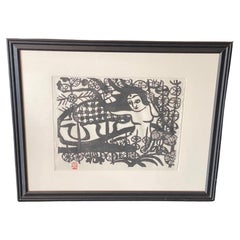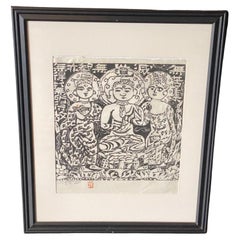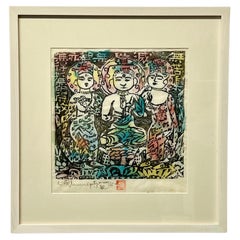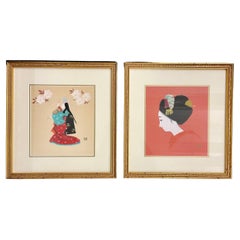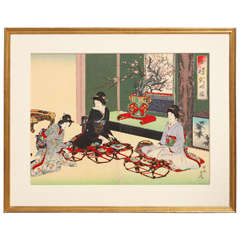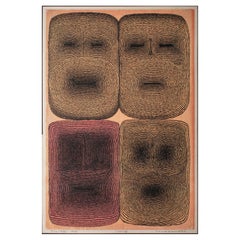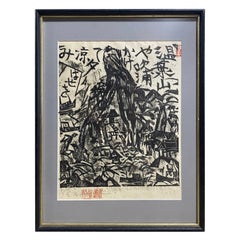
Shiko Shikou Munakata Signed Japanese Woodblock Print Mountain Lanscape Village
View Similar Items
Want more images or videos?
Request additional images or videos from the seller
1 of 18
Shiko Shikou Munakata Signed Japanese Woodblock Print Mountain Lanscape Village
About the Item
- Creator:Shiko Munakata (Artist)
- Dimensions:Height: 18.75 in (47.63 cm)Width: 14.75 in (37.47 cm)Depth: 1 in (2.54 cm)
- Style:Showa (Of the Period)
- Materials and Techniques:
- Place of Origin:
- Period:
- Date of Manufacture:1975
- Condition:The print is in very good vintage condition. The frame may have light wear consistent with age and use (please see photos). Beautiful and engaging overall.
- Seller Location:Studio City, CA
- Reference Number:1stDibs: LU2254330127162
Shiko Munakata
Shiko Munakata is by many regarded as one of the most significant modern Japanese artists of the twentieth century. His art work consists of paintings, prints, ceramics and calligraphy. Looking at his art work, the way he produced it and his fame, one could be tempted to call him the Japanese Picasso of the twentieth century - in every aspect. Born in Aomori Shiko Munakata was born as the son of a blacksmith in Aomori Prefecture, located in the North of Japan's main island. He first began to paint in oil as a self-taught artist. Later in 1924 he went to Tokyo to study art. Three years after the artist's death, the city of Aomori opened the Munakata Shiko Memorial Museum of Art. The museum web site has one page with a summary of the career of the artist in English. At the age of 23 Munakata Shiko saw a woodblock print by Sumio Kawakami and decided to try woodblocks himself. Under the guidance of Unichi Hiratuka he learned the art of making moku-hanga - woodblock prints. Three years later he exhibited four woodblocks at the Shunyokai exhibition. From then on Munakata Shiko was a hanga artist - a print artist. He continued to exhibit and by and by his reputation grew. After World War II had ended, the artist became famous outside Japan. His works were shown at the Lugano Print Exhibition in 1952, the Sao Paulo Biennal in 1955, the Venice Biennal in 1956. In each of these exhibitions he was awarded with first prizes. After these successful exhibition, Munakata went to the U.S., where he lectured at different universities and had numerous solo exhibitions. Munakata Shiko preferred to call his prints banga, which could be translated like picture made from a wooden panel. Munakata was a practicing Buddhist. Many of his prints and paintings show religious subjects. Other subjects are taken from Japanese legends or from nature. Munakata's prints are larger than the traditional Japanese oban (10x15 inches = 25.4x38 cm) size. With his larger-sized prints he followed Western contemporary artist's and the buying habits of Western clients. Japanese homes are usually small and have little wall space to hang art work and therefore Japanese art buyers tend to buy smaller sizes. A Munakata print is usually in black and white. The techniques he used are woodblocks, woodcuts and lithographs. Like Pablo Picasso, Shiko Munakata worked spontaneously, fast and was extremely prolific. Shiko Munakata died in Tokyo in 1975 at the age of 72.
About the Seller
5.0
Platinum Seller
Premium sellers with a 4.7+ rating and 24-hour response times
1stDibs seller since 2016
888 sales on 1stDibs
Authenticity Guarantee
In the unlikely event there’s an issue with an item’s authenticity, contact us within 1 year for a full refund. DetailsMoney-Back Guarantee
If your item is not as described, is damaged in transit, or does not arrive, contact us within 7 days for a full refund. Details24-Hour Cancellation
You have a 24-hour grace period in which to reconsider your purchase, with no questions asked.Vetted Professional Sellers
Our world-class sellers must adhere to strict standards for service and quality, maintaining the integrity of our listings.Price-Match Guarantee
If you find that a seller listed the same item for a lower price elsewhere, we’ll match it.Trusted Global Delivery
Our best-in-class carrier network provides specialized shipping options worldwide, including custom delivery.More From This Seller
View AllShiko Shikou Munakata Signed Japanese Woodblock Buddha Bodhisattva Print
By Shiko Munakata
Located in Studio City, CA
A wonderful Mingei woodblock print featuring the Buddha or Bodhisattva by famed Japanese master Showa era printmaker/ artist Shiko Munakata (棟方志功 ) who is regarded by many as one of ...
Category
20th Century Japanese Showa Prints
Materials
Paper
Shiko 'Shikou' Munakata Signed Japanese Mingei Woodblock Print Hirosaki Castle
By Shiko Munakata
Located in Studio City, CA
A wonderful Mingei woodblock print titled "Hirosaki Castle (sometimes just "Castle")" by famed Japanese master Showa era printmaker/ artist Shiko Munakata (棟方志功 ) who was widely considered to have been the Pablo Picasso of Japan. Munakata was associated with the Sosaku-hanga movement and the mingei (folk art) movement. His awards and recognitions include the "Prize of Excellence" at the Second International Print Exhibition in Lugano, Switzerland in 1952, the first prize at the São Paulo Bienal Exhibition in Brazil in 1955, and the Grand Prix at the Venice Biennale in 1956. In 1959 he spent a year touring and exhibiting in the United States. Upon his return, the Horinji Temple in Kyoto bestowed him with the honorary rank of “Hokkyo”. In 1962, he received the rank of “Hogan” from Nisseki Temple in Toyama prefecture. other awards include the Medal of Honor in 1963 and the Asahi Shimbun Culture Prize in 1965. In 1970, Munakata received the Order of Culture, the highest honor in the arts by the Japanese government.
Munakata's work can be found in numerous international collections and museums including:
The Britsih Museum, UK
The Chicago Art Institute
Museum of Modern Art (MOMA), NY
The Metropolitan Museum of Art (The Met), NY
The Philadelphia Museum of Art
The Smithsonian American Art Museum (SAAM), Washington DC
Kemper Art Museum, St. Louis
The Munakata Shiko...
Category
Mid-20th Century Japanese Showa Prints
Materials
Paper
Shiko Munakata Sealed Japanese Woodblock Print of Female Deity Goddess Joshin
By Shiko Munakata
Located in Studio City, CA
A wonderful Mingei woodblock print titled "Joshin" (Goddess) by famed Japanese master Showa era printmaker/ artist Shiko (Shikou) Munakata (棟方志功 )who was widely considered to have be...
Category
Vintage 1930s Japanese Showa Prints
Materials
Paper
Shiko Munakata SignedJapanese Woodblock Print of Three Buddhas Shaka No Saku
By Shiko Munakata
Located in Studio City, CA
A wonderful Mingei woodblock print titled "Shaka No Saku (Sakyamuni)" is by famed Japanese master Showa era printmaker/ artist Shiko (Shikou) Munakata (棟方志功 ) who was widely consider...
Category
Vintage 1950s Japanese Showa Prints
Materials
Paper
Shiko Shikou Munakata Rare Signed Japanese Pottery Chawan Tea Bowl Signed Box
By Shiko Munakata
Located in Studio City, CA
An exceptionally rare, wonderfully designed Chawan tea bowl by famed Japanese master woodblock printmaker/ artist Shiko Munakata (1903-1975) who is widely considered to be the most important Japanese visual artist of the 20th century and the Pablo Picasso of Japan. This hand-painted work clearly illustrates Munakata's whimsical side as it is of a Koma - a child's spinning top toy. Very few examples of Munakata's work in ceramics exist still today.
The work is signed by Munakata on the base as well as the original wood protective storage box (his seal can also be seen faintly in the lower-left corner).
The bowl has a small kintsugi or "golden joinery" repair - the Japanese art of repairing broken pottery by mending the areas of breakage with lacquer dusted or mixed with powdered gold - on the inside. As a philosophy, it treats breakage and repair as part of the history of an object, rather than something to disguise.
Munakata who is often compared to Picasso was primarily associated with and a principal figure in both the Sosaku-Hanga (which stressed the artist as the sole creator ) and the Mingei (folk art) movements. His many accolades and awards include the "Prize of Excellence" at the Second International Print Exhibition in Lugano, Switzerland in 1952, and first prize at the São Paulo Bienal Exhibition in Brazil in 1955, followed by the Grand Prix Award at the Venice Biennale in 1956, and the Order of Cultural Merit, the highest honor in the arts by the Japanese government in 1970. In 1960 after returning from a year abroad exhibiting his work in the United States, the Horinji Temple in Kyoto bestowed upon him the honorary rank of “Hokkyo”. In 1962, he received the rank of “Hogan” from Nisseki Temple in Toyama prefecture. He also received a Medal of Honor in 1963 and the Asahi Shimbun culture prize in 1965.
Munakata's work can be found in numerous international collections and museums including:
The Britsih Museum, UK
The Chicago Art Institute
Museum of Modern Art (MOMA), NY
The Metropolitan Museum of Art (The Met), NY
The Philadelphia Museum of Art
The Smithsonian American Art Museum (SAAM), Washington DC
Kemper Art Museum, St. Louis
And his own museum The Munakata Shiko...
Category
Mid-20th Century Japanese Showa Ceramics
Materials
Ceramic
Kiyoshi Saito Signed Japanese Woodblock Geisha Print Maiko Kyoto 3
By Kiyoshi Saitō
Located in Studio City, CA
A beautifully and serenely composed woodblock print by famed Japanese printmaker Kiyoshi Saito. Many consider Saito to be one of the most important, if not the most important, contem...
Category
Vintage 1960s Japanese Showa Prints
Materials
Paper
You May Also Like
Shiko Munakata "Three Buddhas" Woodblock 1957, Japan
By Shiko Munakata
Located in Oakland, CA
Amazing woodblock by one of the masters, Shiko Munakata, circa 1957. This one titled, "Three Buddhas". Just professionally framed with a beautiful bleached oak frame. Hand signed in ...
Category
Vintage 1950s Japanese Modern Prints
Materials
Paper
Pair of Japanese Woodblocks Custom Frames Signed
Located in Manhasset, NY
A Pair of Finely Framed Japanese Woodblocks. Each of a Geisha in dress the pair both having artist signature in Japanese. Both in fine custom...
Category
Antique 1890s Prints
Materials
Paper
$3,250 / set
Japanese Color Woodblock Print by Toyohara Chikanobu
By Toyohara Chikanobu
Located in New York, NY
This Meiji-period color woodblock by Toyohara Chikanobu (1838-1912) depicts three elegant female courtiers in traditional dress taking refreshments. Th...
Category
Antique Late 19th Century Japanese Meiji Prints
Materials
Paper
1969 Graphic Woodblock Print by Tomio Kinoshita, Japan
By Tomio Kinoshita
Located in Point Richmond, CA
Faces (4 Faces), 1969
Tomio Kinoshita (1923-2014), Japan
Woodblock print
Paper, pigment, sumi ink
Image: 27 high by 18.25 inches wide (68.5 by 46.4 cm)
Paper size: 28 high by 19...
Category
Vintage 1960s Japanese Mid-Century Modern Prints
Materials
Paper
1981 Graphic Woodblock Print by Tomio Kinoshita, Japan
By Tomio Kinoshita
Located in Point Richmond, CA
Tomio Kinoshita (1923 - 2014)
Masks (No. 4), 1981
Woodblock print
Image Size: 22 high by 31 inches wide (56 by 79 cm)
Paper Size: 22.75 high by 31.5 inches wide (57.8 by 80 cm)
...
Category
Vintage 1980s Japanese Mid-Century Modern Prints
Materials
Paper
1960 Big Boys, Woodblock Print by Tomio Kinoshita, Japan
By Tomio Kinoshita
Located in Point Richmond, CA
Tomio Kinoshita (1923 – 2014)
Big Boys, 1960
Woodblock print
Image size: 32.75 high by 22 inches wide (83 by 56 cm)
Paper size: 35.5 high by 23.75 inches wide (90 by 60.3 cm)
Signed: in pencil lower right, Tomio Kinoshita
Titled: in pencil at lower left
Edition: 30/50
Condition: Very good
The woodblock for this large print was carved in 1958, just three years after Kinoshita’s began creating woodblocks. This print was signed and dated in 1960, but not numbered; prints were also pulled from this block in the 1970s, so it must have been one of more popular images.
One of his students has written, “As time progressed further, the postwar era saw improvements in nutrition, and children became taller and heavier than in the past, but their lack of physical exercise and severely inferior physical abilities became a social problem; this is ironically depicted in Big Boys.” In 1963, Kinoshita told him that he had just finished pulling a print of this image in response to a request from Unichi Hiratsuka...
Category
Vintage 1960s Japanese Mid-Century Modern Prints
Materials
Paper
Recently Viewed
View AllMore Ways To Browse
Grand Tour Seal
Terada Akitoyo
Tsuchiya Koitsu
Woodblock Prints Natori Shunsen
Akiyama Iwao
Kiyoshi Saito Woodblock Print Dachshund B Dog Sitting
Shima Tamami
Weeping Monk
Yamaguchi Gen
Yoshio Kanamori
Wool Hand Knotted
Lamp Used
Hand Knoted Wool
Hand Knotted Wool Rug
Pairs In Furniture
Entry Hall Table
Vintage United Furniture
Can Dining


